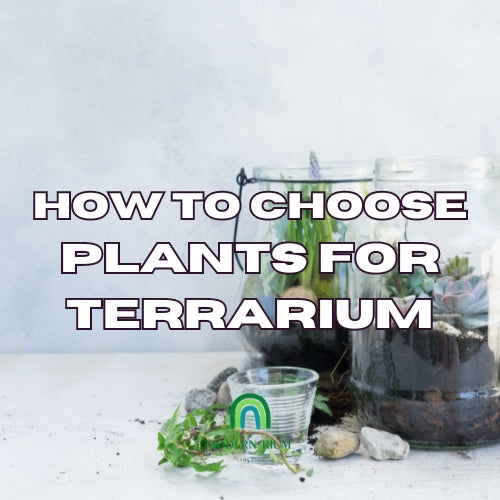
Choosing the Perfect Plants for Your Terrarium
Pham DannyShare
How to choose the Plants for Terrarium and How to take care of them
Welcome to the world of terrariums! These enchanting mini-ecosystems have captured the hearts of plant enthusiasts and nature lovers alike. Whether you're a seasoned gardener or a beginner looking to bring a touch of green into your space, this comprehensive guide will equip you with the knowledge on how to choose plants for your terrarium.
Closed Terrarium Plants
Closed terrariums are self-sustaining ecosystems that create their own microclimate, making them an ideal choice for a variety of plant species. In this section, we'll explore the best plants for closed terrariums and their specific care requirements.
Selecting the Right Plants
When choosing plants for a closed terrarium, consider the following criteria:
- Size: Select plants that will thrive in the confined space of the terrarium, avoiding large or fast-growing species that may outgrow the container.
- Light Requirements: Choose plants that have similar lighting needs, as the lighting within a closed terrarium can be limited.
- Moisture Preferences: Opt for plants that require similar watering and humidity levels to ensure they can all thrive in the same environment.
Popular Closed Terrarium Plants
Some of the most popular and well-suited plants for closed terrariums include:
- Ferns: Delicate and lush, ferns such as maidenhair fern, bird's nest fern, and rabbit's foot fern thrive in the humid, shaded conditions of a closed terrarium.
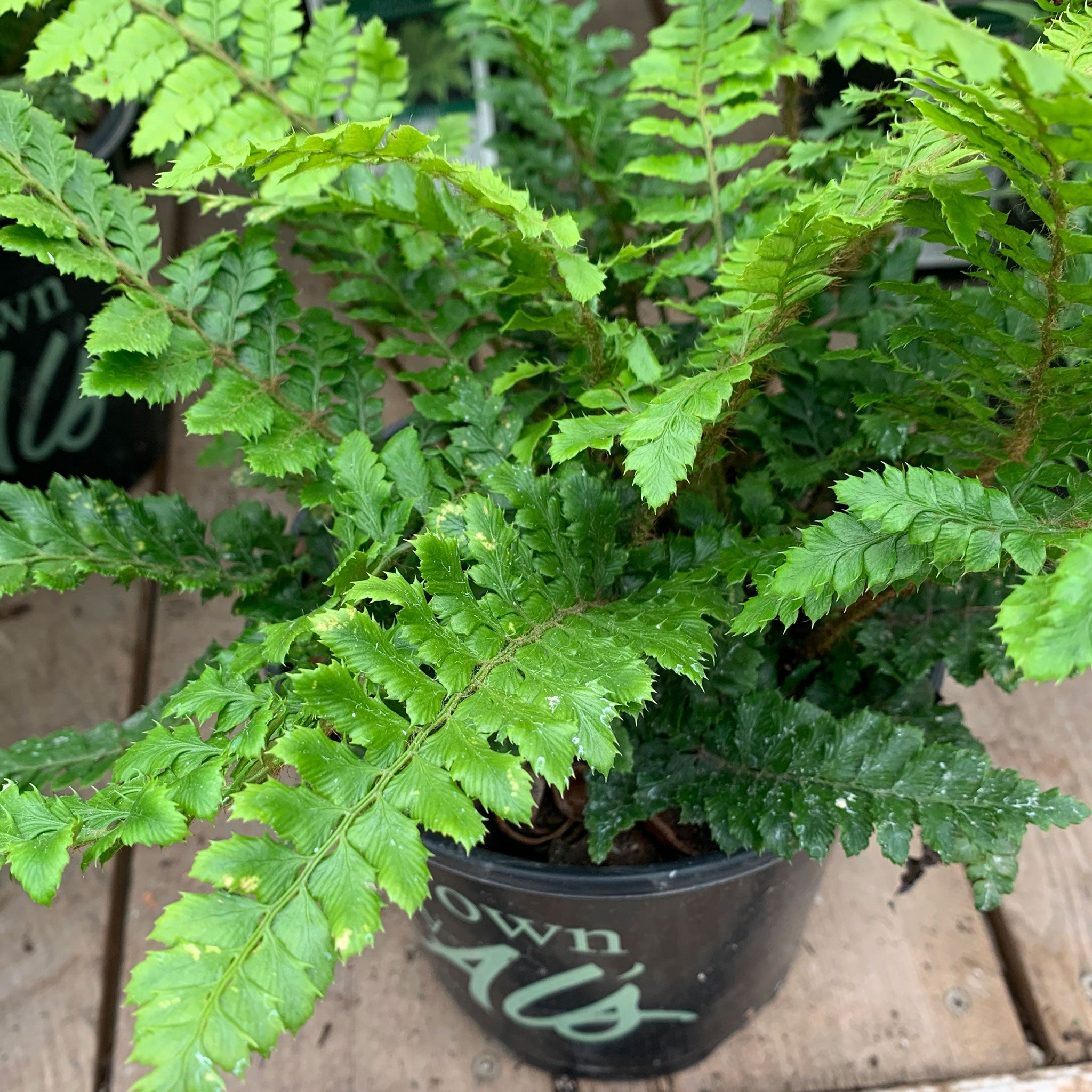
Ferns are the best plants for terrariums
- Mosses: Soft, verdant mosses, like sheet moss and cushion moss, add a touch of whimsy and help maintain the desired humidity levels.

Mosses are great for humidity control
- Succulents: Certain succulent varieties, like echeveria and jade plants, can be grown in closed terrariums, but they may require more careful monitoring to prevent excess moisture buildup.
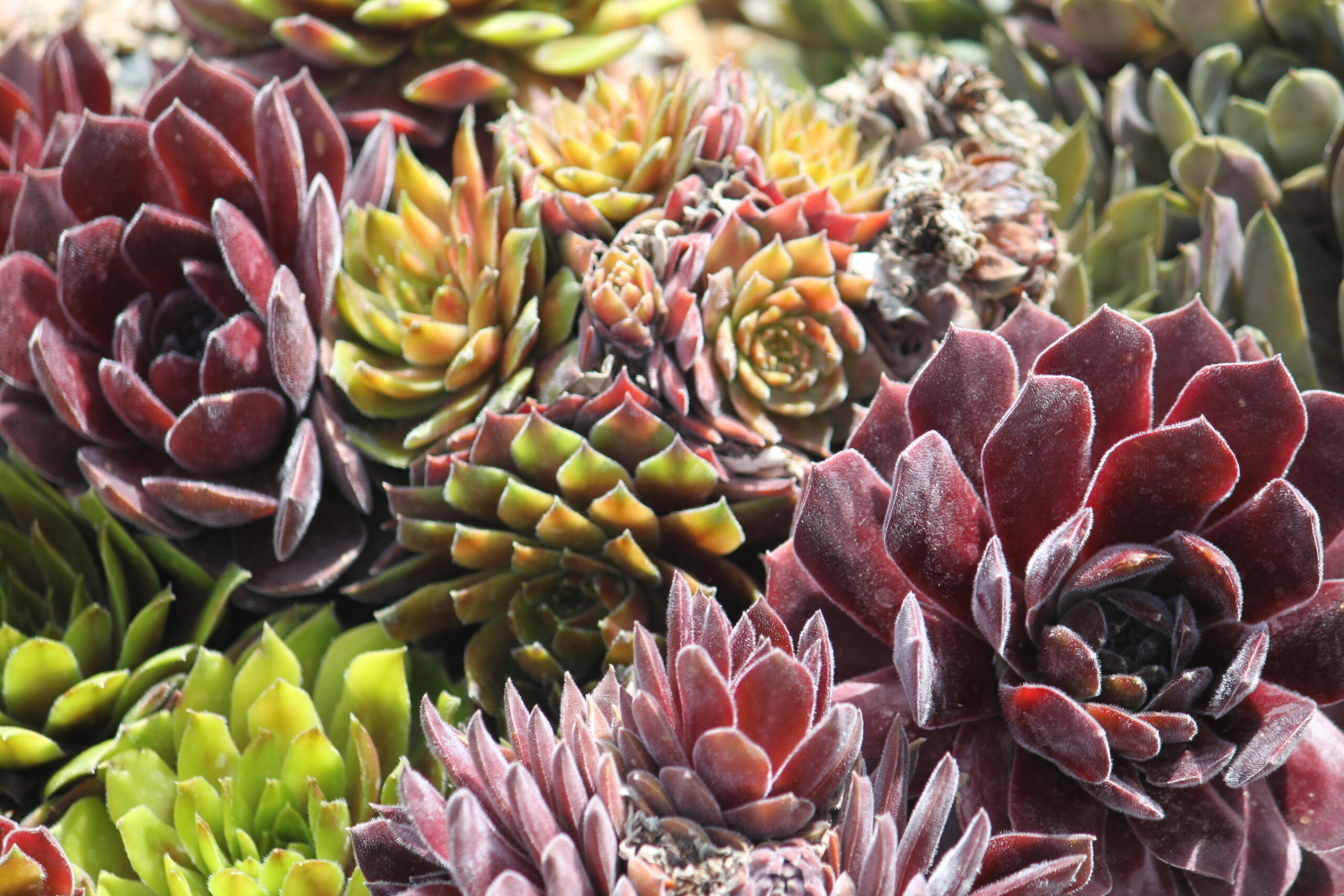
Succulents make your terrarium looks beautiful
- Carnivorous Plants: Carnivorous plants, such as pitcher plants and sundews, can make for fascinating additions to a closed terrarium, thriving in the humid conditions.
_-_Jonathan_Dickinson_State_Park.jpg)
Sundews
Care and Maintenance
Maintaining a closed terrarium requires a delicate balance of watering, lighting, and ventilation. Follow these guidelines to ensure the long-term health of your closed terrarium plants:
- Watering: Water your closed terrarium plants sparingly, as the enclosed environment will retain moisture more effectively than an open terrarium.
- Lighting: Provide bright, indirect light, either through natural sunlight or supplemental lighting, to meet the needs of your chosen plants.
- Ventilation: Periodically open the terrarium lid or door to allow for fresh air exchange and prevent the buildup of stagnant air.
- Pruning and Cleaning: Regularly prune any overgrowth or dead foliage, and gently clean the inside of the container to maintain a healthy, thriving ecosystem.
Plants for Terrariums
Terrariums offer a diverse range of planting possibilities, catering to the preferences and growing needs of a wide variety of plant species. In this section, we'll explore some of the most popular and versatile plants suitable for various types of terrariums.
Terrarium Suitable Plants
When selecting plants for your terrarium, consider the following characteristics:
- Size: Choose plants that will comfortably fit within the confines of your terrarium, avoiding those that may quickly outgrow the container.
- Light Requirements: Match the lighting needs of your plants to the available light in your terrarium's location.
- Moisture Preferences: Ensure that the moisture levels in your terrarium can accommodate the watering needs of your chosen plants.
Low-Light Terrarium Plants
For terrariums in low-light environments, consider the following plant options:
- Ferns: Maidenhair fern, bird's nest fern, and rabbit's foot fern thrive in shaded, humid conditions.
- Mosses: Sheet moss, cushion moss, and sphagnum moss add a lush, verdant touch to low-light terrariums.
- Peperomia: Varieties like peperomia prostrata and peperomia puteolata offer interesting foliage and compact growth habits.
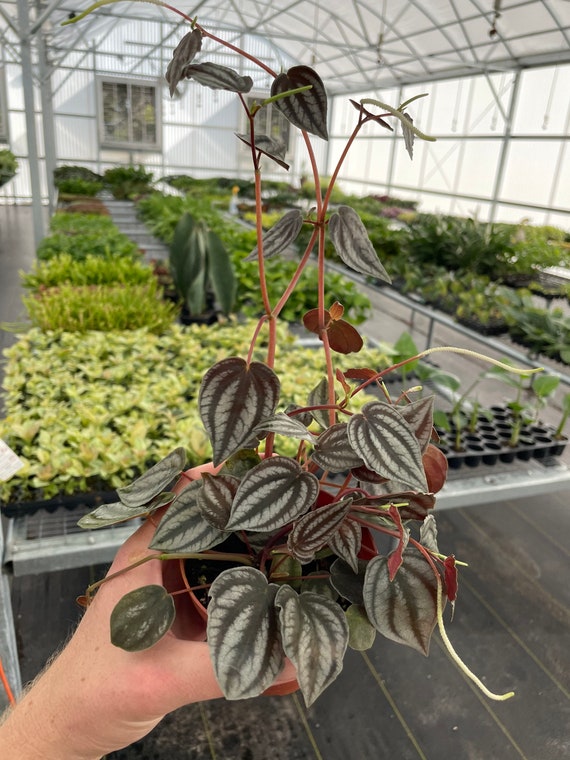
Peperomia
Succulents and Cacti
Succulents and cacti can make for stunning and low-maintenance terrarium additions, provided they receive the right amount of light and air circulation:
- Echeveria: Rosette-forming echeveria cultivars add vibrant pops of color to your terrarium.

Echeveria
- Haworthia: Haworthia species, such as haworthia fasciata and haworthia attenuata, offer unique and compact growth.

Haworthia
- Lithops: Also known as "living stones," lithops thrive in the well-draining conditions of a terrarium.

Lithops
Tropical and Carnivorous Plants
For a more dynamic and captivating terrarium, consider incorporating tropical or carnivorous plant species:
- Tropical Plants: Bromeliads, tillandsias, and small-growing philodendrons can add a lush, jungle-like feel to your terrarium.
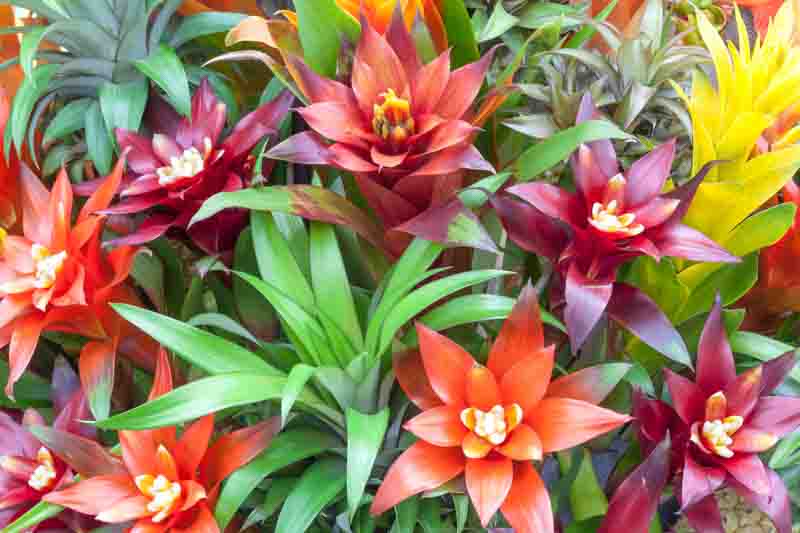
Bromeliads
- Carnivorous Plants: Pitcher plants, sundews, and Venus flytraps make for fascinating and unique additions to a terrarium.
Maintenance and Care
Regardless of the plant species you choose, proper terrarium care is essential for their long-term health and vitality. Remember to monitor water levels, provide the appropriate lighting, and maintain adequate air circulation to ensure your terrarium plants thrive.
Terrarium Care Sheet
Maintaining a thriving terrarium requires a combination of knowledge and attention to detail. To help you stay on top of your terrarium's care, we've compiled a comprehensive care sheet that covers the essential aspects of terrarium maintenance.
Watering
- Water your terrarium only when the top layer of soil begins to dry out, typically every 1-2 weeks.
- Use a spray bottle or a small watering can to mist the plants and soil gently, avoiding overwatering.
- Adjust watering frequency based on the specific needs of your terrarium plants, environmental conditions, and the type of terrarium (open or closed).
Lighting
- Place your terrarium in a location that receives bright, indirect sunlight for several hours each day.
- If natural light is limited, supplement with a suitable grow light, ensuring the plants receive the necessary light for photosynthesis.
- Monitor your plants for signs of etiolation (stretching toward the light) or discoloration, and adjust the lighting accordingly.
Pruning and Maintenance
- Regularly prune any dead, damaged, or overgrown foliage to maintain a neat and healthy appearance.
- Remove any fallen leaves or debris to prevent the buildup of moisture and potential mold or fungal issues.
- Gently clean the inside of the terrarium's glass or walls to maintain visibility and prevent the accumulation of dust or mineral deposits.
Temperature and Ventilation
- Maintain a consistent temperature range between 65°F and 80°F (18°C and 27°C) for most terrarium plants.
- Provide adequate air circulation by opening the terrarium lid or door periodically to prevent the buildup of stagnant air.
- Avoid placing your terrarium in direct sunlight or near sources of extreme heat or cold, as this can stress the plants.
Fertilizing
- Use a diluted, balanced liquid fertilizer every 2-3 months during the growing season to replenish nutrients in the soil.
- Avoid over-fertilizing, as this can lead to salt buildup and damage the plants.
Monitoring and Troubleshooting
- Regularly inspect your terrarium for any signs of pests, disease, or imbalances in the ecosystem.
- Address any issues promptly, such as adjusting watering, lighting, or ventilation, to maintain the health and vitality of your terrarium plants.
By following this comprehensive terrarium care sheet, you'll be well on your way to creating and maintaining a thriving indoor garden that brings joy and beauty to your living space.
Terrarium Care
Terrariums are a unique and versatile way to cultivate a diverse array of plants in a controlled environment. Proper terrarium care is essential to ensure the health and longevity of your indoor garden. In this section, we'll cover the fundamental aspects of terrarium care, from selecting the right container to providing the optimal growing conditions.
Choosing the Right Container
The foundation of a successful terrarium is the container. The size, shape, and material of the container can significantly impact the growth and well-being of your plants. When selecting a terrarium container, consider the following factors:
- Size: Choose a container that provides adequate space for your chosen plants to thrive. Smaller terrariums are better suited for compact, slow-growing species, while larger containers can accommodate more diverse plant communities.
- Shape: Terrariums come in a variety of shapes, from classic glass jars to unique geometric designs. Consider the shape that best complements your desired aesthetic and the needs of your plants.
- Material: Glass is a popular choice for terrariums, as it allows for optimal light transmission and visibility. However, you may also consider containers made of other materials, such as ceramic or stone, depending on your personal preference and the specific requirements of your plants.
Soil Preparation and Drainage
The soil in a terrarium plays a crucial role in providing the necessary nutrients and moisture retention for your plants. When preparing the soil, consider the following:
- Soil Composition: Use a well-draining, nutrient-rich potting mix specifically formulated for terrarium plants. Avoid using regular garden soil, as it may be too dense and heavy for the confined terrarium environment.

Avoid using garden soil
- Drainage Layer: Incorporate a drainage layer at the bottom of the container, using materials like pebbles, charcoal, or small stones. This layer helps to prevent waterlogging and ensures proper drainage, which is essential for the health of your plants.
- pH Balance: Ensure that the soil pH matches the preferences of your chosen plants. Some species thrive in slightly acidic or neutral conditions, while others may prefer a more alkaline environment.
Lighting and Placement
Adequate lighting is essential for the growth and well-being of your terrarium plants. Consider the following when selecting the placement and lighting for your terrarium:
- Natural Light: Terrariums thrive best in bright, indirect sunlight. Placement near a window that receives several hours of direct sunlight per day is ideal.
- Artificial Lighting: If natural light is limited, you can supplement with an appropriate grow light, ensuring that your plants receive the necessary light for photosynthesis.

Grow light or normal light can help with inadequate natural lighting.
- Placement: Avoid placing your terrarium in direct sunlight, as the intense heat can damage or dry out the plants. Instead, choose a spot that receives a balanced amount of light throughout the day.
Watering and Humidity
Maintaining the right balance of water and humidity is crucial for the health of your terrarium plants. Follow these guidelines to ensure proper watering and humidity levels:
- Watering: Water your terrarium plants sparingly, as overwatering can lead to root rot and other issues. Observe the soil moisture and water only when the top layer begins to dry out.
- Humidity: Terrariums naturally create a humid environment, which is essential for many plant species. Monitor the humidity levels and consider adding a small water feature or misting the plants occasionally to maintain the optimal humidity.
Temperature and Ventilation
Temperature and ventilation play a significant role in the overall well-being of your terrarium plants. Consider the following:
- Temperature: Maintain a consistent temperature range that suits the specific needs of your plants. Most terrarium plants thrive in a temperature range between 65°F and 80°F (18°C and 27°C).
- Ventilation: Proper air circulation is essential to prevent the buildup of stagnant air and excess moisture. Periodically open the terrarium lid or door to allow for fresh air exchange.
Terrarium Care Tips
In addition to the fundamental care guidelines, there are several tips and tricks that can help you optimize the health and longevity of your terrarium plants. In this section, we'll explore some invaluable terrarium care tips to ensure your indoor garden flourishes.
Selecting the Right Container
- Choose a container with a tight-fitting lid or door to maintain the desired humidity levels.
- Opt for a transparent container, such as glass or acrylic, to allow for maximum light penetration.
- Consider the size and shape of the container to accommodate the mature size of your selected plants.
Layering the Substrate
- Create a well-draining substrate by layering materials like pebbles, charcoal, and high-quality potting soil.
- The bottom layer should consist of a 1-2 inch (2.5-5 cm) depth of pebbles or small stones to facilitate drainage.
- The middle layer should be a 1-inch (2.5 cm) layer of activated charcoal, which helps to filter and purify the water.
- The top layer should be a 2-4 inch (5-10 cm) depth of a well-draining, nutrient-rich potting mix suitable for your chosen plants.
Planting Techniques
- Carefully plant your selected species, ensuring they have enough space to grow without overcrowding.
- Consider the placement and arrangement of your plants, creating a visually appealing and balanced composition.
- Gently pack the soil around the plants, avoiding compaction, to allow for proper root development.
Ongoing Maintenance
- Monitor the moisture levels in your terrarium regularly and adjust watering as needed.
- Prune and remove any dead or dying foliage to maintain the overall health and appearance of your plants.
- Periodically clean the inside of the container to remove any mineral deposits or condensation buildup.
- Rotate or rearrange your terrarium plants to ensure they receive even light exposure.
Troubleshooting Common Issues
- Address signs of overwatering, such as yellowing or wilting leaves, by reducing watering and improving air circulation.
- Respond to underwatering by misting the plants and increasing the frequency of watering.
- Mitigate mold or fungal growth by improving air flow, reducing moisture levels, and removing affected plant material.
- Address pests, such as mealybugs or spider mites, by isolating the affected plants and treating them with a safe, natural pest control solution.
By incorporating these terrarium care tips into your maintenance routine, you'll be well on your way to creating and sustaining a thriving, low-maintenance indoor garden.
Terrarium Care Watering
Proper watering is a crucial aspect of terrarium care, as the delicate balance between moisture and drainage can make or break the success of your indoor garden. In this section, we'll dive deep into the art of watering your terrarium plants, ensuring they receive the right amount of hydration to thrive.
Understanding Terrarium Water Cycles
Terrariums, particularly closed terrariums, create a unique water cycle within the confined environment. The moisture from the soil and plants evaporates, condenses on the container's walls, and then drips back down to the soil, creating a self-sustaining system. This water cycle is essential for maintaining the correct moisture levels and preventing the buildup of stagnant water.
Watering Techniques
- Frequency: Water your terrarium plants only when the top layer of soil begins to dry out, typically every 1-2 weeks. Avoid overwatering, as this can lead to root rot and other issues.
- Method: Use a spray bottle or a small watering can to gently mist the soil and plants, taking care not to oversaturate the substrate.
- Targeted Watering: Focus on watering the soil directly, rather than splashing water on the foliage, to prevent fungal growth and maintain the desired humidity levels.
Factors Affecting Watering Needs
Several factors can influence the watering requirements of your terrarium plants, including:
- Plant Species: Different plants have varying water needs, with some thriving in drier conditions and others preferring consistently moist soil.
- Container Size: Larger terrariums generally require more frequent watering than smaller ones, as the soil takes longer to dry out.
- Lighting Conditions: Plants in brighter light conditions will transpire more and require more frequent watering than those in lower light.
- Temperature and Humidity: Higher temperatures and lower humidity levels will cause the soil to dry out faster, necessitating more frequent watering.
Monitoring and Adjusting Watering
Closely observe the appearance and behavior of your terrarium plants to determine the appropriate watering schedule. Signs that your plants may need more or less water include:
- Underwatering: Wilting, drooping, or discolored leaves may indicate that the plants are not receiving enough moisture.
- Overwatering: Yellowing, mushy, or moldy leaves, as well as standing water in the substrate, can signal that the plants are receiving too much water.
Adjust your watering routine accordingly, and be prepared to modify it as the seasons change or as your terrarium plants mature and their needs evolve.
Remember, the key to successful terrarium watering is finding the delicate balance that meets the specific requirements of your indoor garden. By mastering this art, you'll ensure the long-term health and vitality of your terrarium plants.
Terrarium Care Pruning
Pruning and maintenance are essential components of terrarium care, helping to promote healthy growth, shape, and overall aesthetics of your indoor garden. In this section, we'll delve into the art of terrarium pruning, exploring techniques to keep your plants looking their best.
Tools for Pruning
- Sharp Scissors or Pruners: Invest in a pair of sharp, clean scissors or pruners specifically designated for your terrarium plants.
- Small Shears: Opt for small shears with precision tips for detailed pruning and shaping.
- Cleaning Supplies: Keep rubbing alcohol or disinfectant wipes on hand to sterilize your tools between uses and prevent the spread of diseases.
Pruning Techniques
- Deadheading: Remove spent flowers or dead foliage to encourage new growth and prevent the spread of disease.
- Pinching: Pinch back leggy stems or overgrown areas to promote bushier growth and maintain plant shape.
- Thinning: Thin out overcrowded areas to improve air circulation and light penetration, reducing the risk of pests and diseases.
- Shaping: Trim and shape your plants to maintain a balanced and visually appealing arrangement within the terrarium.
Timing and Frequency
- Regular Maintenance: Incorporate pruning into your regular terrarium care routine to address any issues promptly.
- Seasonal Pruning: Consider seasonal pruning to coincide with periods of active growth or flowering for optimal results.
- Monitor Growth: Keep an eye on the growth patterns of your plants and prune as needed to prevent overcrowding or competition for resources.
Benefits of Pruning
- Promotes Growth: Pruning stimulates new growth and helps plants allocate resources more efficiently.
- Enhances Aesthetics: Maintaining a well-groomed appearance enhances the overall visual appeal of your terrarium.
- Prevents Disease: Removing dead or diseased foliage can prevent the spread of pathogens and keep your plants healthy.
Avoiding Common Mistakes
- Overpruning: Be mindful not to remove too much foliage at once, as this can stress the plants and inhibit growth.
- Neglecting Pruning: Regular pruning is essential for the health and longevity of your terrarium plants; neglecting this task can lead to issues down the line.
- Improper Technique: Use proper pruning techniques to avoid damaging the plants or introducing infections.
By mastering the art of terrarium pruning and incorporating it into your regular care routine, you'll help your indoor garden thrive and flourish for years to come.
Terrarium Care Temperature
Temperature plays a crucial role in the health and well-being of your terrarium plants, influencing growth, metabolism, and overall vitality. In this section, we'll explore the impact of temperature on terrarium care and provide tips for maintaining optimal conditions for your indoor garden.
Ideal Temperature Range
- Tropical Plants: Most terrarium plants, especially those suited for closed terrariums, thrive in temperatures ranging from 65-75°F (18-24°C).
- Cold-Hardy Plants: If you're growing cold-hardy plants in an open terrarium, ensure they're exposed to cooler temperatures, typically around 50-60°F (10-16°C).
- Avoid Extremes: Steer clear of temperature extremes, as sudden fluctuations or prolonged exposure to high or low temperatures can stress or damage your plants.
Monitoring Temperature Levels
- Thermometer: Place a thermometer inside your terrarium to monitor temperature fluctuations and ensure they remain within the ideal range.
- Location: Position your terrarium away from direct sunlight, drafty areas, or heat sources that can cause temperature spikes or drops.
- Seasonal Adjustments: Be prepared to adjust the location or insulation of your terrarium to accommodate seasonal temperature changes.
Heating and Cooling Methods
- Heating Pads: Use heating pads designed for terrariums to provide gentle warmth during cooler months, especially for tropical plants.
- Fans or Ventilation: Improve air circulation with fans or ventilation to prevent overheating and maintain consistent temperature levels.
- Insulation: Insulate your terrarium with materials like bubble wrap or blankets during colder months to retain heat and protect against drafts.
Signs of Temperature Stress
- Wilting: Plants may wilt or droop in response to extreme temperatures, signaling the need for adjustment.
- Leaf Burn: Browning or scorched leaves can indicate sunburn from excessive heat exposure.
- Stunted Growth: Prolonged exposure to suboptimal temperatures can slow growth and development in your terrarium plants.
Seasonal Considerations
- Summer: Shield your terrarium from direct sunlight and excessive heat during the summer months to prevent overheating.
- Winter: Protect your terrarium from cold drafts and temperature fluctuations by insulating it and adjusting its location as needed.
By maintaining a close eye on temperature levels, making necessary adjustments, and providing a stable environment for your terrarium plants, you'll create an ideal habitat for them to thrive and prosper.
Video
Conclusion
Terrarium care is a rewarding and fulfilling endeavor that allows you to bring a piece of nature into your home while exercising your green thumb. Whether you're tending to a closed terrarium with lush tropical plants or an open terrarium featuring succulents and cacti, the key to success lies in understanding and meeting the specific needs of your plants.
By selecting the right container, layering the substrate effectively, mastering planting techniques, and implementing ongoing maintenance practices, you can create a thriving indoor garden that brings joy and tranquility to your space. Remember to tailor your care routine to the individual requirements of your plants, monitoring factors like watering, pruning, and temperature to ensure optimal growth and health.
With dedication, patience, and a bit of green know-how, you can cultivate a beautiful and sustainable terrarium that will be the envy of all who behold it. So roll up your sleeves, grab your watering can and pruning shears, and embark on your terrarium care journey with confidence. Your miniature ecosystem awaits, ready to flourish under your expert care.
 is here! Shop now, pay later in 4 easy installments
is here! Shop now, pay later in 4 easy installments











1 comment
Could you please send me a list and picture of the mosses that you have in stock and prices. Thanks in advance